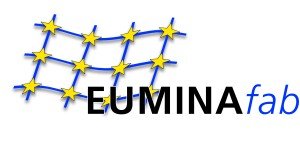Sep 1 2009
EUMINAfab offers open access to machines and know-how in micro- and nanotechnologies for users from science and industry. Today, this European infrastructure facility coordinated by KIT is starting operation: Ten leading institutions from research and industry in eight EU member states make available a total of 36 high-tech installations along with the corresponding scientific and technological expertise. Users are given cost-free access, provided that they agree to a publication of research results.

Micro- and nanotechnologies, two complementary disciplines of miniaturization in science and engineering, allow for novel materials, effects, and functionalities. Hence, they are assigned a key role in innovations in many areas. EUMINAfab, the first European virtual scientific infrastructure facility for micro- and nanofabrication and characterisation, opens up new pathways for researchers and developers to study and process a variety of functional materials. Users of EUMINAfab have access to 36 high-technology installations at ten institutions in eight European countries, the investment volume of which amounts to more than 200 million Euros. In addition, the respective scientific expertise is offered. Today, on September 1, 2009, the first announcement starts for the submission proposals for user access under www.euminafab.eu.
EUMINAfab is coordinated by the KIT NANOMICRO: Science, Technology, Systems Program. “Based on our extensive portfolio of miniaturization technologies, users are offered specific micro- and nanotechnological solutions for their problems and development projects. This will be of particular benefit to both industrial competition and science“, explains EUMINAfab project coordinator Matthias Kautt.
EUMINAfab stands for European Infrastructure for Micro- and Nanofabrication and Characterization. The spectrum of options extends from practical access to individual machines with the possibility of testing and evaluating upcoming technologies under self-selected conditions to the development of coordinated technical solutions and tailored process chains. It is focused on micro- and nanostructurization, thin-layer deposition, molding, and characterization.
Interested researchers and developers may submit their project proposal online under www.euminafab.eu. Following an independent review of technical feasibility, scientific relevance, and originality of the proposal, they are granted access to EUMINAfab. The project will be funded by the European Commission under the 7th EU Research Framework Programme with up to six million Euros until 2013, among others for the use or shared operation of facilities and to cover the travelling expenses of the users. If the review criteria are met and the researchers agree to publish the results of their work, access to the EUMINAfab infrastructure is cost-free. EUMINAfab offers maximum competence and confidentiality also for nonpublic, proprietary research, with the costs being borne by the user.
The European Commission expects funding to result in facilitated access of European clients from science and industry to upcoming technologies for their early transfer to products and the realization of competitive advantages. The Commission transnational, access of users to the installations and processes of EUMINAfab.
In the course of the project, the partners strive for a better comparability and improved linking of promising technologies in order to accelerate development processes by up to 30 percent. Due to close cooperation with its users, EUMINAfab will enhance the understanding of technologies in particular through comparative studies and technology assessments.
The EUMINAfab consortium consists of the following partners: Cardiff University, Great Britain; Centro Ricerche FIAT S.C.p.A., Italy; Commissariat à l’Energie Atomique, France; Forschungszentrum Karlsruhe GmbH/Karlsruhe Institute of Technology (coordination), Germany; Fraunhofer Society, Germany; Fundación TEKNIKER, Spain; IMS Nanofabrication AG, Austria; Kungliga Tekniska Högskolan, Sweden; MiPlaza Philips Research Europe, the Netherlands; National Physical Laboratory, Great Britain.
The Karlsruhe Institute of Technology (KIT) is the merger of the Forschungszentrum Karlsruhe, member of the Helmholtz Association, and the Universität Karlsruhe. This merger will give rise to an institution of internationally excellent research and teaching in natural and engineering sciences. In total, the KIT has 8000 employees and an annual budget of 700 million Euros. The KIT focuses on the knowledge triangle of research – teaching – innovation.
The Karlsruhe institution is a leading European energy research center and plays a visible role in nanosciences worldwide. KIT sets new standards in teaching and promotion of young scientists and attracts top scientists from all over the world. Moreover, KIT is a leading innovation partner of industry.